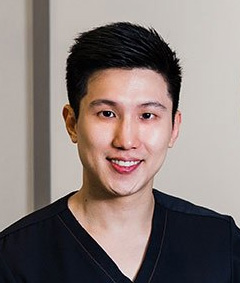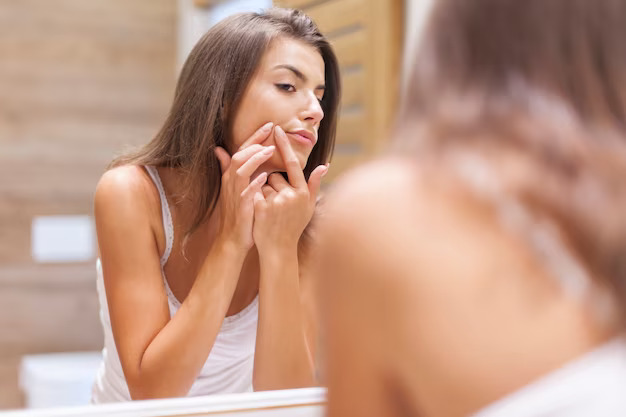While acne is a common dermatological condition affecting individuals regardless of gender, there are stark and distinct differences in how it presents itself in males and females. It’s a prevalent skin concern, impacting an estimated 85% of people at some point. Dr Justin Boey, Medical Director of Sozo Aesthetic Clinic, shares that “Acne can not only cause physical discomfort but also lead to psychological distress due to its impact on personal appearance.” Understanding the gender-specific manifestations, causes, and treatment strategies of acne is crucial. This understanding can guide more effective and personalised approaches to managing this pervasive skin condition.
Contents
Acne in Males
Males typically experience the onset of acne during the early teenage years, coinciding with puberty and the surge in male hormones, particularly testosterone. This hormone stimulates the sebaceous glands, producing excessive sebum—an oily substance that can clog pores, resulting in acne. Males often suffer from more severe forms of acne, including cystic and nodular acne, which are more likely to cause acne scarring. This severity can be attributed to males generally possessing larger sebaceous glands and more oily skin than females.
Acne in males is commonly seen on the face, particularly the forehead and cheeks, but can also frequently occur on the chest, back, and shoulders—the areas with a high density of sebaceous glands. Because of their higher physical activity levels, males may also experience acne mechanica—acne caused by heat, friction, and pressure against the skin.
Acne in Females

Females typically experience acne in waves that correspond with their menstrual cycle due to fluctuating hormone levels. Unlike males, female acne is not strictly limited to the teenage years and can persist well into adulthood, with longer periods and even into the 30s and 40s. This pattern is often referred to as ‘hormonal acne’, with breakouts frequently occurring a week or so before menstruation begins. Female acne is generally less severe than male acne, typically manifesting as papules and pustules rather than the more severe cystic and nodular acne common in males.
Females are also more likely to experience acne on the lower half of the face, especially around the chin and jawline, with lesions appearing and disappearing following the menstrual cycle. Furthermore, adult females may observe acne on the lower cheeks, neck and areas around the mouth, a pattern distinct from their male counterparts. Stress, use of cosmetics and certain medications can exacerbate acne in females. Despite female patients generally having less oily skin than males, females do have a significantly higher tendency towards post-inflammatory hyperpigmentation — lingering discolouration after an acne lesion has healed.
Hormonal Influences in Male and Female Acne
Hormones play a key role in the differences in acne between males and females. In both genders, the hormone androgen is primarily responsible for the stimulation of sebum production, leading to the creation of an environment conducive to acne. However, the level and impact of androgens vary considerably between genders.
In males, a surge in testosterone at puberty, an androgen, increases sebum and oil production. This high sebum production, combined with males’ generally larger pore size and oily skin, creates a favourable environment for acne-causing bacteria, resulting in more severe forms of acne, such as cystic and nodular acne.
In females, the hormonal landscape is more complex. Estrogen and progesterone, the primary female hormones, generally have an inhibitory effect on sebum production. However, females also produce androgens, albeit at lower levels than males. Just before menstruation, the levels of estrogen and progesterone drop while the relative level of androgens rises. This rise in androgens triggers an increase in sebum production, leading to the development of acne.
Additionally, conditions such as Polycystic Ovary Syndrome (PCOS), medical condition in which there is an excess of androgens, can cause persistent and severe acne in females.
Understanding these hormonal influences can help guide more effective and targeted treatment strategies for acne in males and females.
Treatment Options for Men

Acne treatment for men typically begins with a solid skincare routine. It’s recommended to cleanse and moisturise the skin daily using products specifically designed for acne-prone skin. Over-the-counter products containing salicylic acid, benzoyl peroxide, or retinoids can effectively manage acne as they help unclog pores, reduce inflammation, and increase cell turnover.
For severe cases of acne, a dermatologist may prescribe topical or oral antibiotics to combat the bacteria causing the acne. Isotretinoin, a potent retinoid, is often used in severe cystic acne that hasn’t responded to other treatments. It’s important to note that isotretinoin can have significant side effects, and a healthcare professional must closely monitor its use.
Men should also be mindful of other factors exacerbating acne, such as sweat and friction from workout equipment or clothing. Showering immediately after exercise, wearing breathable clothing, and using non-comedogenic skincare products can help to manage acne mechanically.
Lifestyle changes, such as a balanced diet and sufficient hydration, can also significantly affect skin health. Although research is still ongoing, some studies suggest that diets high in sugar and dairy may contribute to facial acne.
Men must understand that while these treatments can manage acne, they may not eliminate the condition. Patience and consistency are key, as improvement can take several weeks. Always consult with a dermatologist for personalised advice tailored to individual skin needs.
Treatment Options for Women

Acne treatment for women involves a similar foundational skincare routine as men’s, with daily cleansing and moisturising using products formulated for acne-prone skin. Over-the-counter products containing active ingredients such as salicylic acid, benzoyl peroxide, and retinoids can help unclog pores, reduce inflammation, and increase cell turnover.
However, some treatments may be particularly effective due to the complex hormonal makeup and nature of female acne. Topical and oral contraceptives can help regulate hormonal fluctuations that lead to acne, particularly when breakouts coincide with the menstrual cycle. Oral contraceptives that contain both estrogen and progestin have been approved for adult acne treatment and can be a suitable option for women experiencing hormonal acne.
A dermatologist may prescribe anti-androgen medications or hormonal therapies such as spironolactone for acne patients with more persistent or severe forms of acne. These treatments reduce the amount of androgens in the body, thereby decreasing sebum production.
As with men, lifestyle factors can also significantly impact acne. Females should be aware of potential acne triggers in cosmetics and skincare products, opting for non-comedogenic options where possible. Dietary changes may also help manage acne, with some studies suggesting a link between women with acne and diets high in sugar and dairy.
Lastly, women must understand that treatment effectiveness varies and patience is needed. Consistency in following a prescribed treatment plan is key, and it can take several weeks to see noticeable improvement. Consult a dermatologist for personalised advice and treatment plans tailored to individual skin needs.
FAQs about Male and Female Acne
Can birth control pills help female acne?
Yes, certain types of birth control pills can be an effective treatment for women struggling with hormonal acne. Specifically, oral contraceptives with anti-androgenic properties are often prescribed for this purpose. Androgens are male hormones that both men and women produce. While they have important functions for both sexes, in excess, they can lead to increased sebum production, which is a key factor in the formation of acne.
Birth control pills that contain both estrogen and progestin, particularly those progestins with anti-androgenic properties, can help regulate androgen levels, thereby reducing sebum production and helping to control breakouts. It’s crucial to consult with a healthcare provider to discuss this treatment option, as certain risks and side effects are associated with taking oral contraceptives.
Do males and females experience acne at different ages?

Yes, the onset of acne can vary between males and females. Acne commonly occurs during adolescence in both genders due to the surge of hormones associated with this development stage. However, it often presents earlier in males, which can be attributed to the higher levels of androgens they produce during puberty.
Despite its early onset, male acne can persist into adulthood. In contrast, women may experience new-onset acne or a continuation of adolescent acne into adulthood, often as a result of hormonal fluctuations associated with the menstrual cycle or conditions like Polycystic Ovary Syndrome (PCOS). It’s important for male patients to remember that acne can occur at any age and is not confined to the adolescent years.
Does facial hair affect male acne?
Yes, facial hair can have an impact on male acne. Facial hair, particularly in the beard area, creates a trap for oil, sweat, and bacteria. This buildup of substances creates an environment conducive to the development of acne. As sebum and dead skin cells accumulate in the hair follicles, they block the pores, resulting in comedones or ‘clogged pores’. The trapped sebum provides an ideal breeding ground for acne-causing bacteria, triggering inflammation and the formation of acne lesions such as pimples or cysts.
This condition, known as “Folliculitis”, can be managed with proper skin care and grooming practices, including regular washing and trimming of the beard. Maintaining cleanliness in the beard area is crucial to minimise the risk of adult acne breakouts.
Are genetics involved in acne susceptibility?
Indeed, genetics can play a significant role in acne susceptibility for both males and females. Research suggests that if your parents had acne, you’re likely to develop it as well, indicating a clear genetic link. This inherited predisposition to adult acne can be attributed to factors such as the skin’s natural oiliness, rate of skin cell turnover, propensity for inflammation, and immune response to Propionibacterium acnes, the bacteria implicated in acne.
However, while genetics can predispose an individual to acne, they don’t predetermine it. Environmental factors, lifestyle habits, and hormonal fluctuations also contribute significantly to the development of acne.
How do lifestyle factors affect acne in both genders?
Lifestyle factors such as diet, stress, and skincare habits play a substantial role in acne manifestation in both genders. Diet, particularly one rich in high glycemic index foods, has been linked to acne flares. Males and females who frequently consume sugary drinks, white bread, pasta, and sweets may experience more breakouts due to increased insulin levels, stimulating sebum production. However, hormonal fluctuations in females, especially around the menstrual cycle, may make them more susceptible to breakout triggers from diet.
Stress is another factor that affects acne in both genders, leading to an increase in the body’s production of hormones such as cortisol, which can stimulate oil glands. While both genders experience stress, studies show that adult women may be more susceptible to stress-induced adult acne due to their naturally fluctuating hormone levels.
Lastly, skin care habits significantly impact acne. Poor hygiene, infrequent face washing, and not removing makeup can lead to clogged pores and increased acne. Both males and females need to choose non-comedogenic skincare products. However, cosmetics usage is more common in females and, if not properly managed, may contribute significantly to acne.
Conclusion
Acne is a common skin condition that affects both males and females, but its manifestation and triggers can vary significantly between the genders. For males, factors such as facial hair and higher levels of androgens can contribute to the onset and persistence of acne. For females, hormonal fluctuations related to the menstrual cycle and conditions like PCOS often play a major role.
Lifestyle factors, including diet, stress, and skincare habits, influence acne in both genders, while genetics can predispose individuals to acne. Understanding these differences can help adopt personalised care routines and effective treatments to manage this condition. Always seek advice from a dermatologist for individualised treatment plans.





